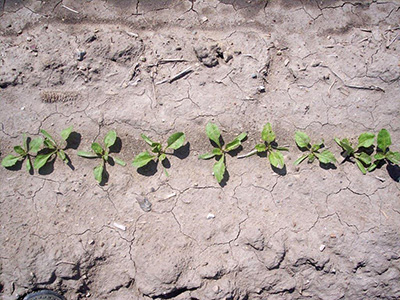Factors to consider for sugarbeet replanting
Sugarbeet replanting decisions are always difficult due to multiple factors ranging from population, plant health and timing of replants.

The 2016 Michigan sugarbeet emergence generally appears to be off to a good start. However, certain growing areas and individual fields encountered emergence issues for a variety of reasons. In Michigan, it is not unusual for 3-7 percent of sugarbeet acres to be replanted in any given year. Replanting is a difficult judgment call because it needs to be based on a variety of factors including plant population, health of the plants and unevenness of gaps. It is also important to take into consideration the time of the year. There is no hard rule on how many plants should be kept, but the Michigan State University Extension Sugarbeet Advancement program has had excellent yielding field trials with as few as 60-80 healthy beets per 100-foot of row. Be aware there is no guarantee that replanting will be successful.
In either narrow or wide rows, the optimum population of sugarbeets would average about 175-225 sugarbeets per 100-foot of row. However, sugarbeets are known for their ability to compensate greatly when thin stands occur. In one Sugarbeet Advancement field trial in 2011, a population of 104 sugarbeets per 100-foot of row yielded over 30 tons per acre. Michigan Sugar Company research has shown in many cases that it is better economically to keep a healthy and uniform stand of 75 sugarbeets per 100-foot of row rather than replant.

A healthy, perfect stand of sugarbeets.
It is important to determine what caused the field to have a low population. For emergence issues that are caused by seedling disease or insect activity, growers will want to remedy the issue when replanting by applying the appropriate insecticide, in-furrow fungicide or seed treatment. Replanting usually occurs under warmer soil conditions that can lead to increased seedling disease. Quadris applied in a T-band in-furrow will control seedling Rhizoctonia or Pythium. Tachigaron seed treatment is effective on Aphanomyces. New seed treatments are available for seedling Rhizoctonia and insect control.
It is not uncommon for heavy rainfall after planting to cause crusting or for the seed to sink deeper than the optimum planting or emergence depth. If replanting is warranted, often the best approach is to replant into the existing seedbed without working the soil. This will allow you to retain some of the established plants and plant into a moist, firm seedbed. However, sometimes if seedlings are diseased or soil is very hard, working the field shallow may be the better answer. Normally diseased seedlings will continue to die off and produce sprangled or scarred roots that will be low in sugar and yield.
When trying to determine the average plant population, make sure population counts are done in several locations in the field. Be sure to note the size of the gaps or areas most affected. Often only spotty areas of the field may need to be replanted. Fields that are evenly thin and have only small gap areas will usually fare better for yields and quality. Narrow row sugarbeets will generally have the advantage over wide rows when populations are thin. Prior to glyphosate-tolerant beets, thin stands were often replanted because of weed issues that develop from lack of canopy. We can now effectively control weeds season-long. It is advisable to consult with local agriculturist before any replanting occurs.



 Print
Print Email
Email


